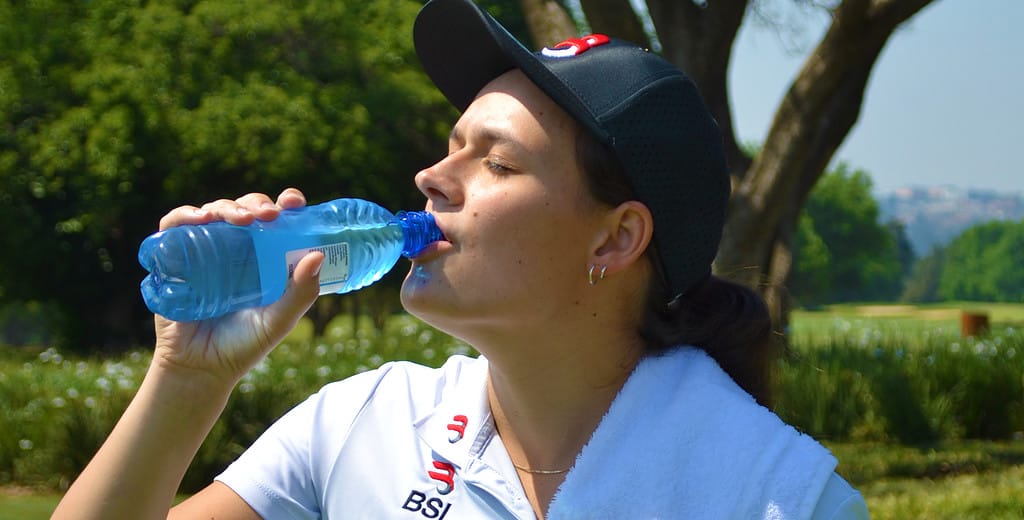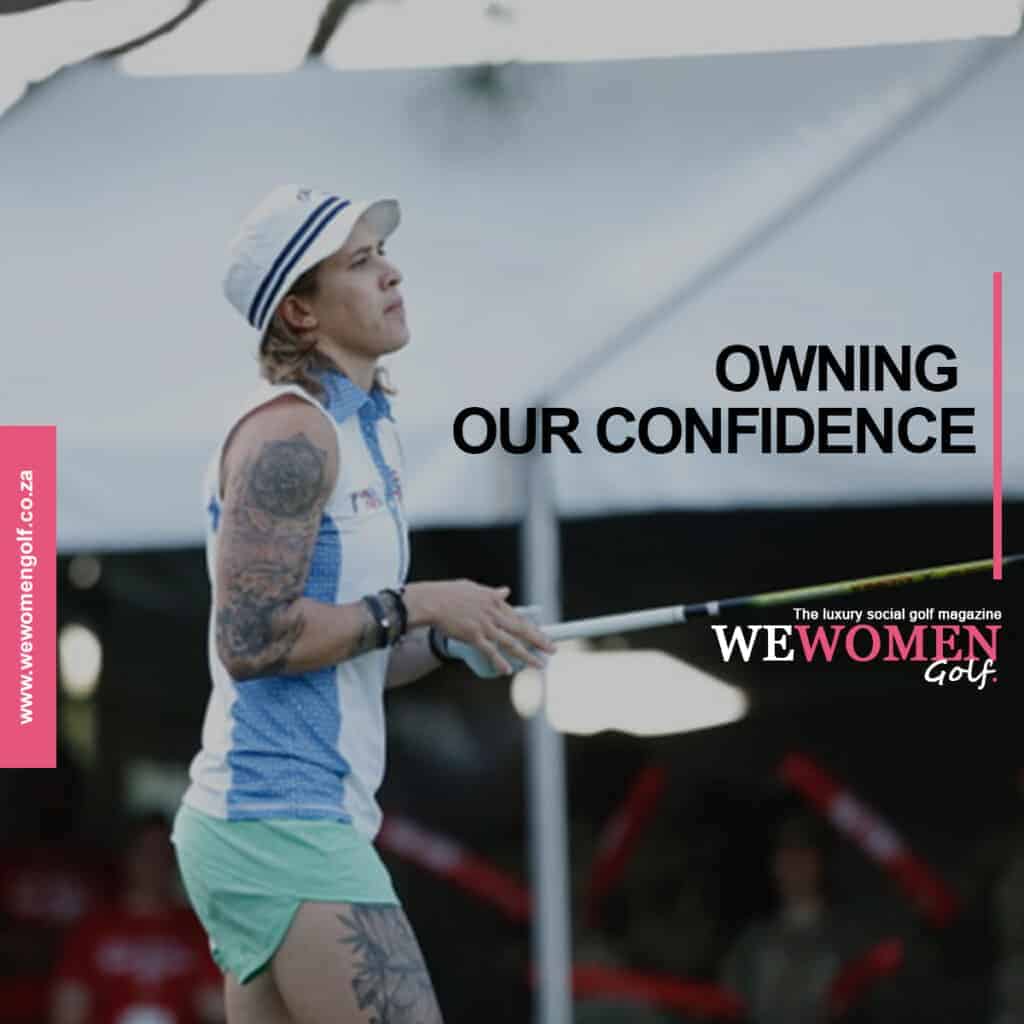
Playing golf in the heat can be very taxing and even dangerous. Our bodies have to work so much harder in the heat. The reason for this is due to an elevated core temperature caused by the hot environment and the body constantly fighting to keep the core temperature at a normal level (thermoregulation). This can lead to fatigue and ultimately a decrease in performance.
With summer on its way, here are six points to consider when playing golf in the heat to ensure proper preparation for tournaments.
PRE-COOLING
Make use of a damp towel, a cold drink or cold-water submersion to delay the onset of heat stress before the round. During exercise the body loses a lot more water than when we are at rest. During this activity our core body temperature rises and the body attempts to dissipate the excess heat generated.
This is performed through sweating (evaporation), and therefore we lose water, even when the environmental temperature is low.
Golfers should avoid fizzy, sugary drinks as these contain ingredients that dehydrate the body further. third hole in an 18-hole round.
Try and avoid drinking ice water, as this can interfere with thermoregulation.
Dehydration is a major cause of fatigue, poor performance, decreased coordination and muscle cramping, it also impairs decision making and skill execution. To avoid the above, the American College of Sports Medicine suggests the following:
- Eat a high carbohydrate, low fat diet and drink plenty fluids between exercise sessions (plain water or fluids without sugar, caffeine or alcohol).
- Drink 500ml (2 cups) of fluid 2 hours before exercise.
- Drink every 10-15 minutes during exercise.
TAILOR THE GUIDELINES
These should be considered guidelines and it should be noted that nutrition should be tailored for each individual’s needs. If you exercise at moderate intensity for more than 60 minutes, you may benefit from a sports drink containing carbohydrates (not greater than 8% concentration).
If you exercise in extreme conditions over 5 hours (warm weather) you will need to add a complex sports drink with electrolytes to your water. Golfers who do not consume electrolytes under these conditions risk over hydration (hyponatremia).
Dehydration
Soft drinks and juice should be diluted otherwise this increases dehydration. Fizzy drinks should be consumed sparingly due to high sugar content. “Diet drinks” contain artificial sweeteners (chemicals such as aspartame) and are not a healthy alternative. Tea and coffee (caffeine) is a diuretic and makes the body excrete more fluid instead of retaining it.
There are 3 types of sports drinks classified on the amount of carbohydrate that they contain:
- Hypotonic <6% carbohydrate concentration (quickly replace fluids- low in carbohydrates) Mix a sugar drink with ¾ water
- Isotonic 6-8% carbohydrate concentration (contain similar concentrations of salt and sugar as is found in blood. These drinks quickly replace fluids and electrolytes lost through sweating and give a boost of simple carbohydrate). E.g., 250ml of real fruit juice (100% juice, not a ‘juice drink’), 250ml water and a pinch of salt.
- Hypertonic >8% carbohydrate concentration (less water, higher concentration of salt/sugar- top up glycogen stores e.g., Powerade)
Too much carbohydrates in the form of a hypertonic drink can result in dehydration and stomach upsets unless carefully used in conjunction with water. An electrolyte replacement is ideal which contains sodium, potassium and magnesium. Rehidrat (oral rehydrate sachets found at pharmacies) or lemon water mixed with Himalayan salt and honey can be used to replace electrolytes.
SIGNS OF DEHYDRATION
- Dry mouth
- Fatigue
- Dizziness
- Stomach ache
- Back pain
- Headache
- Irritability
- Decreased urination
NUTRITION
Fruits, nuts and biltong are great for on course snacks (every third hole). Stay away from heavy, complex carbohydrate meals during the round.
CLOTHING
Wear loose, lightweight (cotton) material that is light in colour. Wear a wide brimmed hat with a lightly coloured exterior and dark lining.
Make use a damp towel to place on your head or neck for heat dissipation.
EQUIPMENT
Carry an umbrella with you and stay in the shade as much as possible. Apply sunscreen 15min before you go out into the sun and replace the sunscreen during the round.
LONG TERM PREPARATION
Higher fitness levels will help to delay the onset of heat stress. Acclimatizing the body to the heat can help improve the body’s ability to perform better in the heat, i.e., train and practice in hot environments.





